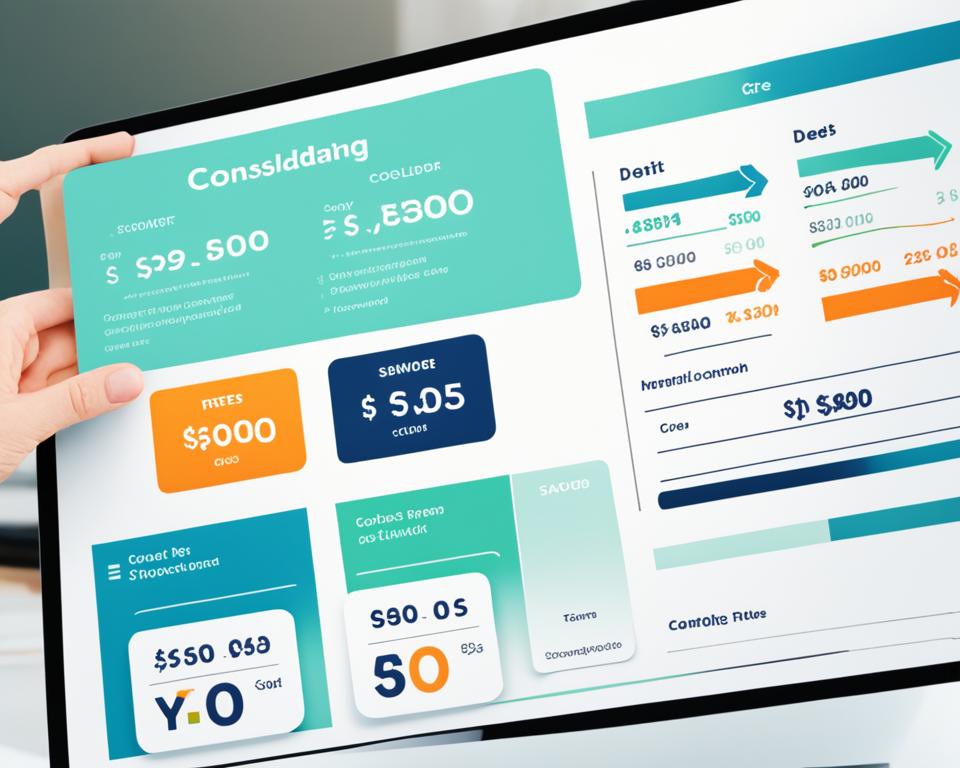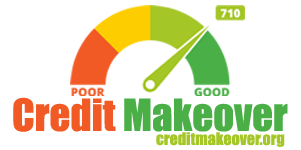Struggling to manage multiple debts can be overwhelming, but there’s a strategic solution often overlooked: debt consolidation loans. Many individuals may wonder, “How can I qualify for a debt consolidation loan?” Understanding the eligibility for a debt consolidation loan is essential as it can pave the way to streamline finances. To embark on this path, learning the debt consolidation loan application process is a smart move towards a more secure financial future.
Qualifying for such a loan typically requires a solid credit history, proof of stable income, and a reasonable debt-to-income ratio. When these elements align, it could unlock the possibility to consolidate various high-interest debts into a single, manageable loan. This method not only simplifies monthly payments but could also reduce the amount of interest paid over time. Ready to take your first step towards simplified finances? Explore the journey of eligibility for a debt consolidation loan that could potentially lead to a debt-free life.
Key Takeaways
- Determining eligibility for a debt consolidation loan starts with understanding your credit profile.
- Application requirements often include credit score evaluation, income verification, and assessing the debt-to-income ratio.
- Streamlining finances through debt consolidation can lead to lower interest rates and a single monthly payment.
- It’s imperative to view debt consolidation as part of a larger financial strategy, not just an immediate fix.
- Prospective borrowers should prepare all necessary documentation prior to initiating the loan application process.
Understanding Debt Consolidation Loans
When considering how to streamline your financial obligations, understanding the intricacies of debt consolidation loans is pivotal. Essentially, this financial strategy aims to condense multiple debts into one manageable loan, potentially leading to significant cost savings and simplification of monthly payments. However, to effectively navigate this debt relief option, one must fully grasp both the advantages and challenges that come with it.
The Basic Concept of Debt Consolidation
Debt consolidation is a method that merges multiple high-interest debts into a singular loan with a reduced interest rate. The core objective is to minimize overall interest costs and combine multiple payments into a single monthly installment, therefore offering convenience and potential financial relief. Meeting the debt consolidation loan qualifications often includes having a substantial credit score and meeting specific debt consolidation loan criteria set by lenders.
Benefits of Consolidating Your Debt
- Simplified finances with only one monthly payment to track.
- Reduced interest rates leading to lower total interest costs over time.
- The possibility of paying off debt more quickly.
- A potential positive impact on credit score due to reduced credit utilization.
- Streamlined budget management with a fixed payment schedule.
Potential Drawbacks to Consider
- Possible origination fees or penalties for early repayment.
- The risk of accruing additional debt if spending behaviors don’t change.
- Longer payment terms could mean paying more interest over the life of the loan.
- Secured loans could put assets such as a home or car at risk.
To sum up, while there are numerous benefits of debt consolidation, applicants should also be aware of the debt consolidation drawbacks that could impact their long-term financial health. Meticulous evaluation of both pros and cons should precede any commitment to a debt consolidation plan. Below is a comparative overview of key factors to consider:
| Consideration | Benefits | Drawbacks |
|---|---|---|
| Interest Rates | Lower rates reduce overall debt cost. | May not be substantially lower than current rates if credit score is low. |
| Monthly Payments | One predictable payment makes budgeting easier. | Potential for a longer repayment period, increasing total interest paid. |
| Fees | Could eliminate various fees associated with multiple debts. | Some consolidation loans may include origination fees or prepayment penalties. |
| Financial Habits | Can encourage disciplined repayment plans and budget management. | Without habit changes, can lead to a cycle of continuing to accumulate new debt. |
Assessing Your Financial Position
Before diving into a debt consolidation loan, it is essential to understand your debt consolidation loan eligibility which begins with a comprehensive financial assessment for loan qualification. This involves meticulously reviewing your debts and finances, considering factors such as the total amount owed, varying interest rates, and existing monthly payment commitments. To assist with this, loan calculators are indispensable tools that provide clarity on what the new monthly payments might look like. Lenders will conduct their own evaluation using this information to determine your suitability for a loan. To facilitate this process, here’s a breakdown that can guide your assessment:
| Current Debt | Interest Rate | Monthly Payment | Outstanding Balance |
|---|---|---|---|
| Credit Card 1 | 22% | $120 | $6,000 |
| Credit Card 2 | 18.5% | $90 | $4,200 |
| Personal Loan | 14% | $230 | $10,000 |
| Auto Loan | 7% | $350 | $15,000 |
Consolidating these debts could potentially reduce your total monthly payments and save on interest, provided that the consolidation loan has a lower rate than the average of your current rates. It is not only about simplifying your payments but also optimizing the total cost over time. Remember, a lender’s decision will be partly predicated on how these numbers stack up, so a clear and accurate depiction of your financial landscape is crucial.
- Itemize and calculate the total amount owed across all debts.
- Assess the average interest rate to understand potential savings with a single, lower-rate loan.
- Measure your overall financial capability to handle new monthly payment structures.
Realistically evaluating your current financial situation is the first stride towards securing a healthier financial future through debt consolidation.
How can I qualify for a debt consolidation loan?
Navigating the process of qualifying for debt consolidation requires a clear understanding of lender expectations and personal financial status. As debt consolidation can be a strategic move to handle financial burdens effectively, knowing the eligibility requirements and the role of credit scores is paramount.
Eligibility Criteria for Borrowers
To ascertain your suitability for a debt consolidation loan, it’s essential to comprehend the eligibility criteria that lenders prioritize. These criteria reflect your financial responsibility and capability to adhere to the new loan terms. Key factors include your total debt amount, your income stability, and, importantly, your credit history.
Importance of Credit Score in the Application Process
A crucial component of qualifying for debt consolidation is your credit score. This numeric representation of your creditworthiness holds significant weight in a lender’s decision to extend a consolidation loan. Ideally, having a credit score for debt consolidation around 700 or above garners the most favorable interest rates, though requirements may vary among financial institutions.

Lenders employ a holistic approach when evaluating a borrower, with the credit score as a pivotal metric. Below is a table outlining the typical debt consolidation loan requirements, including the recommended credit score thresholds:
| Credit Score Range | Loan Approval Likelihood | Anticipated Interest Rates |
|---|---|---|
| 750 and higher | Excellent | Lowest rates |
| 700 to 749 | Good | Competitive rates |
| 650 to 699 | Fair | Higher rates |
| Below 650 | Poor | Subprime rates |
While possessing a lower credit score doesn’t necessarily bar you from acquiring a loan, it may imply steeper borrowing costs – an important consideration when determining if debt consolidation aligns with your financial strategy.
Credit Score and Debt Consolidation
Securing a debt consolidation loan is intricately linked to your credit history, as lenders closely scrutinize your credit score to offer you better loan terms. It’s essential to understand this relationship to fully prepare for the application process. A higher credit score could translate into lower interest rates and significant cost savings over time.
Checking Your Credit Score
Before starting down the path of debt consolidation, checking your credit score is a vital first step. Various resources, including the annual free credit report from the major bureaus, allow you to review your credit report without any cost. Reviewing your credit report carefully can help you identify any inaccuracies or outdated information that may affect your credit score.
Improving Your Credit for Better Loan Terms
To improve your credit score and secure better loan terms for debt consolidation, consider the following actionable steps:
- Paying down existing debt to lower your credit utilization ratio.
- Ensuring timely payment of all bills to establish a pattern of reliability.
- Addressing any inaccuracies on your credit report by filing a dispute with the credit bureau.
- Avoiding the opening of new credit lines within a short period before applying for a consolidation loan.
| Strategy | Impact on Credit Score | Timeline for Potential Improvement |
|---|---|---|
| Debt Repayment | Decreases credit utilization | 1-3 months |
| Timely Bill Payments | Builds payment history | Immediate to ongoing |
| Credit Report Disputes | Removes errors | 1-3 months (after resolution) |
| Limited Credit Inquiries | Prevents score drops | Immediate |
By adopting these strategies, you not only elevate your creditworthiness in the eyes of future lenders but also pave the way for a healthier financial future with more manageable debt obligations.
Debt-to-Income Ratio Explained
When it comes to debt consolidation loan qualifications, one of the most critical aspects for approval is assessing the debt-to-income ratio (DTI). This financial benchmark is used by lenders to gauge a potential borrower’s ability to manage monthly payments and repay debts. A DTI ratio is calculated by dividing the sum of all monthly debt payments by the borrower’s gross monthly income.
The ideal DTI ratio varies by lender, but generally, a lower DTI percentage suggests that an individual has a beneficial balance of debt compared to income, making them a less risky candidate for a debt consolidation loan. Conversely, a higher DTI ratio signals to lenders that an individual may be over-leveraged.
| DTI Ratio Category | Percentage | Impact on Loan Qualification |
|---|---|---|
| Excellent | 20% or less | Ideal candidate for debt consolidation with favorable rates |
| Good | 21% – 35% | Generally qualifies for loans with competitive terms |
| Fair | 36% – 49% | May need to seek specialized lenders or improve DTI |
| Poor | 50% or more | Loan approval is challenging and often comes with high rates |
It’s essential for borrowers to work on improving their DTI ratio if it’s on the higher end. This can be done by increasing income, paying down existing debts, or a combination of both. Lowering the DTI ratio not only enhances loan eligibility but may also lead to obtaining a consolidation loan with more favorable terms.
The importance of assessing your debt-to-income ratio cannot be overstated when exploring debt consolidation options. It provides a clear picture of financial health and is a deciding factor in a lender’s assessment of your capacity to repay a new loan.
Choosing the Right Debt Consolidation Loan
When it comes time to streamline your financial obligations, comparing lenders for debt consolidation is a pivotal step. It isn’t just about finding a loan; it’s about discovering a financial ally that can provide you with favorable terms and guide you towards a debt-free future. Understanding debt consolidation rates and the intricacies of each offer can significantly impact your repayment journey.

Comparison of Lenders: Banks, Credit Unions, and Online
Finding the best financial institution for your debt consolidation needs might mean comparing traditional banks, credit unions, and modern online lenders. Each of these institutions has its unique advantages and offerings. Banks generally provide the security of established reputations, while credit unions may offer more personalized service and member benefits. Online lenders often lead in terms of convenience and speed, with streamlined application processes and quick responses.
Understanding Loan Terms and Rates
Key to selecting the right debt consolidation loan is the understanding of terms and interest rates. APRs represent the cost of borrowing and can vary widely between lenders. Additionally, some lenders may levy fees for origination, late payments, or prepayments, which can add to the total cost of the loan. To make a well-informed decision, prospective borrowers should thoroughly research, utilize prequalification tools, and read customer reviews to discern which lender offers the most favorable conditions.
Applying for a Debt Consolidation Loan
Embarking on the debt consolidation loan application process is a strategic step towards financial stability. The paperwork and information required can appear daunting, but ensuring you have all documentation in order will streamline the journey towards getting approved for a debt consolidation loan.
Before you proceed, take a moment to review the necessary documentation. A well-prepared application is a key to a smooth evaluation by potential lenders. You can apply efficiently online, or visit a bank or credit union in person. Whichever path you choose, remember that your attention to detail and thorough preparation can affect the speed and outcome of the lender’s decision.
- Gather personal and financial documents, such as proof of income and identity.
- Complete the loan application with accuracy and completeness.
- Submit the application and await the lender’s review and decision.
For a clearer overview of the types of documentation required, the following table provides a concise breakdown:
| Required Documentation | Description | Why it’s Needed |
|---|---|---|
| Proof of Income | Recent pay stubs, tax returns, W-2 forms | To demonstrate your ability to meet monthly payments |
| Proof of Identity | Driver’s license, passport, or other government-issued ID | To verify your identity as the loan applicant |
| Credit Report | Credit scores and history | To evaluate your creditworthiness and determine interest rates |
| Proof of Residence | Utility bills or lease agreement | To confirm your current living situation and stability |
Once your application has been submitted, patience is imperative as the assessment can take varying lengths of time depending on the lending institution. Online lenders often boast a quicker turnaround, while traditional banks or credit unions may take additional time for thorough review.
Remember, your path to financial freedom begins with preparation and precision during the loan application process.
Deciphering Lender Requirements
When considering the path to a debt consolidation loan, understanding the lender requirements for debt consolidation is vital. Applicants must demonstrate their creditworthiness and ability to repay the loan through specific documentation. This level of transparency not only affirms the borrower’s financial stability but also aligns with the stringent debt consolidation loan criteria set forth by lending institutions.
Documenting Your Income and Expenses
Borrowers are expected to provide a clear picture of their financial health, one that showcases a stable income versus expense ratio. To satisfy the documentation for loan application, individuals must gather their W-2s, pay stubs, or tax returns. These documents serve as a testament to your earnings and are scrutinized by lenders to ensure that the income reported is sufficient to manage the new loan payments on top of any existing financial obligations.
Providing Proof of Identity and Residence
Aside from financial documentation, proving one’s identity and residency is necessary. Documents such as a government-issued ID, like a driver’s license, and a utility bill or bank statement displaying your current address help lenders verify who you are and where you live. These measures prevent identity fraud and establish trust between the borrower and the lender.
The Role of Collateral in Debt Consolidation
When considering a debt consolidation loan, understanding the function and risks of offering collateral is essential. Collateral, such as home equity or other high-value assets, is often leveraged to obtain secured debt consolidation loans. This approach can be advantageous for individuals looking to consolidate debt but facing challenges due to a lower credit score.

Secured loans typically come with better interest rates and higher loan amounts. This is because lenders have the assurance that they can recoup losses in the event of a default by claiming the pledged assets. However, the caveat here is significant: borrowers risk losing their assets if repayments are not made consistently and in full.
Below, we explore a comparison between collateral in debt consolidation loans and unsecured loans, highlighting the impact collateral has on a borrower’s application.
| Loan Type | Interest Rate | Loan Amount | Risk to Borrower |
|---|---|---|---|
| Unsecured Debt Consolidation Loan | Higher | Lower | None |
| Secured Debt Consolidation Loan | Lower | Higher | Asset Forfeiture |
Choosing between unsecured and secured debt consolidation options should be done with careful consideration. While providing collateral could be a strategic move to managing your debt, safeguarding your assets by ensuring timely repayment is paramount. Hence, mapping out a meticulous financial plan to stay committed to your debt consolidation strategy is as vital as the consolidation itself.
Managing Debt Post-Consolidation
Having navigated the journey of consolidating your debts into one manageable loan, it’s imperative to take the right steps to manage debt after consolidation. By focusing on sustainable repayment strategies and avoiding new debt, individuals can maintain financial stability and work towards a debt-free future. Proper post-consolidation management is not just about making monthly payments; it incorporates strategic budget adjustments and responsible financial habits.
Avoiding New Debt
One of the keys to maintaining the benefits of debt consolidation is avoiding the accumulation of new debt. This means resisting the temptation to use credit cards for unnecessary purchases or taking out additional loans that can sabotage your repayment efforts. Sticking to a budget is critical, as it can help identify potential savings and areas where expenses can be reduced without impacting the quality of life.
Creating a Sustainable Repayment Plan
Creating a sustainable repayment plan is essential for long-term debt management. This involves setting realistic payment goals that align with your income and living expenses. It also means reassessing your budget periodically to ensure it reflects any changes in your financial situation. Building an emergency fund is also a crucial strategy, as it can prevent the need to borrow in the face of unexpected expenses.
- Assess your monthly income and living expenses to determine how much you can comfortably allocate to debt repayment.
- Set up automatic payments to ensure you never miss a payment and stay on track with your repayment plan.
- Monitor your progress regularly and adjust your budget as needed to overcome financial hurdles or take advantage of extra income.
- Prioritize additional payments to your debt whenever possible to reduce interest over the long term and pay off your consolidation loan ahead of schedule.
By implementing these strategies, you not only manage your existing consolidation loan effectively but also pave the way towards future financial freedom.
Pitfalls to Avoid in Debt Consolidation
While debt consolidation can be a strategic stepping stone towards financial stability, it’s not without its set of challenges. Understanding the pitfalls in debt consolidation is essential to avoid turning a solution into a new problem. Consumers should be particularly wary of the risks of debt consolidation loans, which, if not carefully managed, can exacerbate financial strains rather than alleviate them.
One of the most significant risks involves accumulating additional debt after consolidation. This scenario occurs when individuals, feeling a sense of relief from consolidating their payments, may return to old spending habits. To prevent this, rigorous budgeting and financial discipline are paramount. Fees associated with consolidation loans are another area of concern—origination fees, balance transfer fees, and possibly prepayment penalties can all add up, negating the benefits of a lower interest rate.
Moreover, without a robust financial plan, the consolidation merely becomes a temporary fix. It’s crucial that the consolidation plan is part of a broader financial strategy aimed at long-term stability.
| Pitfall | Description | How to Avoid |
|---|---|---|
| Accruing More Debt | Taking on new loans or credit lines after consolidation | Establish a budget and monitor spending rigorously |
| Overlooking Fees | Ignoring additional costs associated with the loan | Thoroughly review loan agreement for fees and calculate overall costs |
| Lack of Financial Planning | Using debt consolidation as a temporary fix | Create a long-term financial strategy that includes debt repayment |
Ultimately, consolidating debt should be accompanied by a commitment to change financial habits and a clear understanding of loan terms. Doing so not only helps in escaping the cycle of debt but also in achieving financial freedom.
Exploring Balance Transfer Credit Cards as an Alternative
For those considering how to effectively manage and reduce their debt, balance transfer credit cards offer an intriguing alternative to debt consolidation loans. These financial tools can be particularly advantageous when lenders extend introductory APR offers. By strategically shifting your existing high-interest balance to a card with a lower introductory rate, you can significantly cut down on the interest accrued as you work towards paying off your outstanding debts.
Evaluating Introductory APR Offers
Introductory APR offers on balance transfer credit cards can serve as a powerful incentive for individuals looking to minimize interest on their debts. Many credit companies propose enticing 0 percent introductory rates for a set period after opening an account. It is, however, paramount to diligently review the finer details of these offers. This includes understanding the length of the introductory period, the APR after the introductory period concludes, and any balance transfer fees that might be applicable. This transparency can ensure that the offer aligns with your debt reduction goals.
Calculating Potential Savings
To determine whether a balance transfer credit card is a suitable alternative to debt consolidation loans, calculating the potential savings is essential. This involves analyzing how much interest you would be liable to pay on your current debts versus the possible rates after utilizing a balance transfer offer. Don’t overlook the impact of any balance transfer fees on your total savings. A meticulously calculated comparison not only reveals the immediate financial benefits but also aids in making a more informed, strategic decision tailored to your fiscal circumstances.
FAQ
How can I qualify for a debt consolidation loan?
To qualify for a debt consolidation loan, you need to assess your credit score, ideally aiming for 700 or above for the most competitive rates. Understand and manage your debt-to-income ratio to show lenders that you can handle the new loan, and compare various lenders to find the best terms and rates.
What is the basic concept of debt consolidation?
The basic concept of debt consolidation is to combine multiple debts into one larger loan with a lower interest rate, which simplifies your payments and can potentially lower your overall interest costs.
What are the benefits of consolidating your debt?
Benefits of debt consolidation include simplifying your finances with a single monthly payment, potential interest savings, and the ability to get out of debt faster if you secure a loan with favorable terms.
What are potential drawbacks to consider with debt consolidation?
Drawbacks can include possible additional fees, the risk of accruing more debt if spending habits don’t change, and potentially longer payment term which could mean paying more interest over time.
How should I assess my financial position before applying for a debt consolidation loan?
Assess your total debt amount, current interest rates, and monthly payments. Check your credit score and review your debt-to-income ratio to determine your ability to manage the consolidated loan payments.
What eligibility criteria do borrowers need to meet for a debt consolidation loan?
Borrowers typically need a good credit score, a manageable debt-to-income ratio, stable income, and often proof of identity and residence. Each lender may have additional specific criteria.
Why is credit score important in the debt consolidation loan application process?
Credit score is a key determinant of your financial reliability. A higher credit score can lead to better loan terms and lower interest rates, making the consolidation more advantageous.
How can I check my credit score?
You can check your credit score through annual credit reports available from the major credit bureaus, through many credit card companies, or by using credit monitoring services.
What can I do to improve my credit for better loan terms?
Improving your credit might include paying all bills on time, reducing overall debt levels, disputing any errors on your credit report, and not applying for new credit lines prior to seeking a debt consolidation loan.
What is the significance of the debt-to-income ratio when applying for a debt consolidation loan?
The debt-to-income ratio measures your ability to manage monthly payments with your current income. Lenders use this as an indicator of whether you can afford a new loan. A lower ratio is more favorable for loan approval.
How should I go about comparing different lenders?
Compare lenders by looking at their APRs, fees, loan terms, and customer service. Use online comparison tools and read reviews to understand their reputation and reliability in the market.
What does understanding loan terms and rates involve?
Understanding loan terms and rates involves knowing the interest rate, monthly payment, loan duration, any additional lender fees, and potential penalties for early repayment.
What documentation will I need to apply for a debt consolidation loan?
You will need to provide proof of income (W-2s, pay stubs, or tax returns), identity (Government-issued ID or Driver’s License), and residence (utility bill or rental agreement).
Why might collateral be required for a debt consolidation loan?
Collateral might be required if you are seeking a secured debt consolidation loan, which could be due to a lower credit score or the desire to secure a larger loan amount or better interest rate.
Why should I avoid new debt after consolidating?
Accumulating new debt can undermine your consolidation efforts, leading to increased financial strain. It’s important to maintain a budget that allows you to focus on repaying the consolidation loan without adding additional liabilities.
How do I create a sustainable repayment plan post-consolidation?
A sustainable repayment plan involves setting a realistic budget that covers your monthly consolidation loan payment while taking into account all other necessary expenses, and possibly allowing for savings.
What are some pitfalls to avoid in debt consolidation?
Key pitfalls include accumulating new debt, underestimating the importance of a spending plan, and failing to consider all fees and costs associated with your new consolidation loan.
When could balance transfer credit cards be a better alternative to consolidation loans?
Balance transfer credit cards with low or 0% introductory APR offers may provide cost savings on interest payments if you can pay off the transferred balance before the promotional rate expires.
How can I evaluate whether introductory APR offers are beneficial?
Evaluate these offers by considering the duration of the low-interest period, balance transfer fees, and the regular APR after the introductory period ends to ensure that the offer aligns with your debt repayment strategy.
What should be considered when calculating potential savings with a balance transfer credit card?
Consider the balance transfer fee, the amount of debt you can pay off during the introductory period, and any potential savings in interest compared to your current rates to determine if it’s a cost-effective solution.





